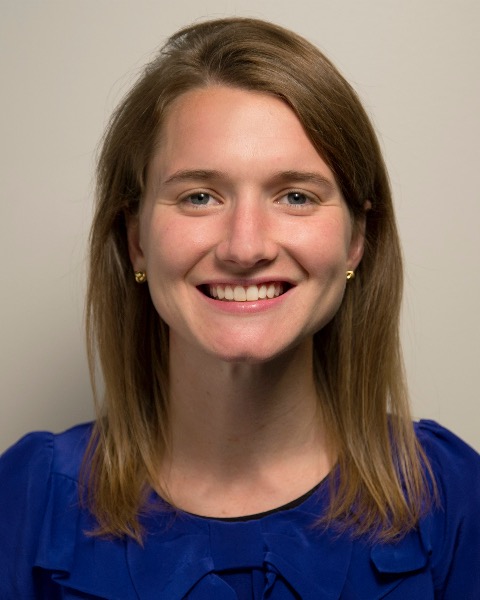Back
Emergency Medicine: All Areas
Category: Abstract Submission
Emergency Medicine III
70 - Predictors of invasive bacterial infection among febrile infants 2 to 6 months of age in the emergency department
Friday, April 22, 2022
6:15 PM – 8:45 PM US MT
Poster Number: 70
Publication Number: 70.105
Publication Number: 70.105
Rebecca S. Green, Boston Children's Hospital, Boston, MA, United States; Paul L. Aronson, Yale School of Medicine, New Haven, CT, United States; Todd A. Florin, Ann & Robert H. Lurie Children's Hospital of Chicago, Chicago, IL, United States; Laura F. Sartori, Childrens Hospital of Philadelphia, Philadelphia, PA, United States; James Chamberlain, Children's National Health System, Washington, DC, United States; kenneth michelson, Boston Children's Hospital, Boston, MA, United States; Marissa R. Samuels, Ann & Robert H. Lurie Children's Hospital of Chicago, Oak Park, IL, United States; Brian Lee, Children's National Health System, Washington, DC, United States; Alexandra R. Linn, Childrens Hospital of Philadelphia, Philadelphia, PA, United States; Lise E. Nigrovic, Boston Children's Hospital, Boston, MA, United States

Rebecca S. Green, MD
Clinical fellow
Boston Children's Hospital
Boston, Massachusetts, United States
Presenting Author(s)
Background: Although validated tools exist to identify invasive bacterial infections (IBI) in febrile infants younger than 60 days of age presenting to the emergency department (ED), identification of IBI in older infants can be challenging.
Objective: To identify factors associated with IBIs in febrile infants 2 to 6 months of age presenting to the ED.
Design/Methods: We performed a retrospective cohort study of previously healthy infants 60 to 180 days of age who presented to one of five participating EDs from 2011 through 2019 with a documented temperature ≥ 38.0°C. The primary outcome was IBI defined as growth of pathogenic bacteria from either blood (bacteremia) or cerebrospinal fluid (CSF) culture (bacterial meningitis). For children who did not have either blood or CSF cultures initially performed, we included all bacterial cultures obtained within 72 hours of arrival in our outcome measure. Using backward stepwise binary logistic regression, we identified independent demographic and clinical predictors of IBI.
Results: Of 21,150 eligible encounters, 11,769 infants (55.6%) were male with a median age of 4.1 months (interquartile range 3.0 to 5.2 months). Of these infants, 101 (0.5%) had an IBI (89 bacteremia and 12 bacterial meningitis). Age ≤ 120 days [adjusted odds ratio (aOR) 4.3; 95% confidence interval (CI) 2.7, 6.9] and peak measured temperature ≥ 39.0°C (aOR 2.8; 95% CI 2.0, 3.7) were independently associated with IBI. Of the 101 infants with an IBI, these high-risk predictors identified 94 infants (sensitivity 93.1%; 95% CI 86.4, 96.7%; specificity 89.2%, 95% CI 88.7, 89.6%; negative predictive value 100%, 95% CI 100,100%). Two of the misclassified infants had bacterial meningitis.Conclusion(s): Febrile infants 4 to 6 months of age with a peak temperature < 39.0°C were at low risk for an IBI. Clinicians could use these factors to assist in initial clinical decision-making for febrile infants 2 to 6 months of age.
Rebecca Green CVRSG HMS CV September 2021.pdf
Objective: To identify factors associated with IBIs in febrile infants 2 to 6 months of age presenting to the ED.
Design/Methods: We performed a retrospective cohort study of previously healthy infants 60 to 180 days of age who presented to one of five participating EDs from 2011 through 2019 with a documented temperature ≥ 38.0°C. The primary outcome was IBI defined as growth of pathogenic bacteria from either blood (bacteremia) or cerebrospinal fluid (CSF) culture (bacterial meningitis). For children who did not have either blood or CSF cultures initially performed, we included all bacterial cultures obtained within 72 hours of arrival in our outcome measure. Using backward stepwise binary logistic regression, we identified independent demographic and clinical predictors of IBI.
Results: Of 21,150 eligible encounters, 11,769 infants (55.6%) were male with a median age of 4.1 months (interquartile range 3.0 to 5.2 months). Of these infants, 101 (0.5%) had an IBI (89 bacteremia and 12 bacterial meningitis). Age ≤ 120 days [adjusted odds ratio (aOR) 4.3; 95% confidence interval (CI) 2.7, 6.9] and peak measured temperature ≥ 39.0°C (aOR 2.8; 95% CI 2.0, 3.7) were independently associated with IBI. Of the 101 infants with an IBI, these high-risk predictors identified 94 infants (sensitivity 93.1%; 95% CI 86.4, 96.7%; specificity 89.2%, 95% CI 88.7, 89.6%; negative predictive value 100%, 95% CI 100,100%). Two of the misclassified infants had bacterial meningitis.Conclusion(s): Febrile infants 4 to 6 months of age with a peak temperature < 39.0°C were at low risk for an IBI. Clinicians could use these factors to assist in initial clinical decision-making for febrile infants 2 to 6 months of age.
Rebecca Green CVRSG HMS CV September 2021.pdf
